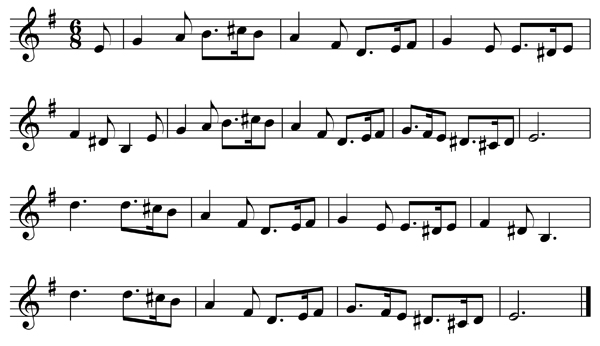

Peter Ewers
Just play! An invitation to improvisation
With a copyright date of 2013, this is the newest improvisation method book that I have seen. I just received my copy this week and very quickly began exploring the contents. Because the book is a hardcover (and includes a ribbon book mark!), my first impression was that rather than a method book, this might be a theoretical tome rather than an instruction manual, but the book does live up to its subtitle: An invitation to improvise.
The book is comprised of short sections of text that read almost like blog posts. While some of the sections are more philosophical in nature, they read easily and definitely are not technical academic writing. One of the earliest “philosophical” points Ewers makes by drawing a parallel with a physics experiment:
When a physics experiment is conducted, one tries to set as many parameters as possible to a fixed value in order to observe remaining parameters, ideally a single one, more precisely. In a vibrant improvisation, all aspects mix up constantly. Nevertheless, in the course of this book, the focus will be on a small number of parameters in order to lift the veil which has been drawn over improvisation.
This paragraph was a light bulb moment for me, and let me know that Ewers has a pedagogical approach to improvisation that makes sense to me. Each of the first chapters chooses a parameter as the focal point (meter and rhythm, harmony, tone colour, dynamics, melodics) before he moves into material that combines multiple elements (Storytelling, the school of Sainte-Clotilde, Pierre Cochereau, and “Be consciously unconcious!”). Within each chapter, the material is delivered in bite-size chunks – i.e. “the blog post” – with a single idea for the student to ponder or to explore at the keyboard.
Another novel idea for me is the graphic notation system for form outlined in the “Storytelling” section. By relating form to plot and a graphic scheme, the student has much more flexibility with the potential realization of the scheme and can quickly develop a form without being so concerned about the details (such as Dupré provides in his Cours Complet D’improvisation ). Several compositions are analyzed using this notation, and I think this could be an excellent way to guide group improvisations.
). Several compositions are analyzed using this notation, and I think this could be an excellent way to guide group improvisations.
In my quick evaluation of the book, while I have found much to recommend it, there are a few weaknesses that I want to point out. First, this book is a translation from German. While most of the phrases and instructions are clear, there are the occasional phrases that seem a little odd, and a few which simply don’t make sense. One of the other issues is a production/editorial decision to fully justify the text. While this looks beautiful on the page, it created many hyphenated words that are either divided in the wrong place or would not have been divided by a native English speaker. Finally, while the table of contents only identifies areas (not specified as chapters), it would be helpful when flipping through the other pages of the book to actually know which chapter I was in and what topic actually constitutes a major subject area change verses a new sub-topic in the same subject area. While it may be a bit of a pain to layout and proofread for these sorts of issues, a few extra hours spent pre-production could have remedied these problems. The content is good, I just wish I didn’t have these obstacles to my encounter with the content.
Just play! An invitation to improvisation by Peter Ewers provides a wonderful guide for an organist to explore the world of improvisation. It provides steps that are accessible and easily managed by the most reluctant improviser. While covering solid material, it does so in a way that is fun for the reader and student so that the contents aptly fit the title: Just play!
by Peter Ewers provides a wonderful guide for an organist to explore the world of improvisation. It provides steps that are accessible and easily managed by the most reluctant improviser. While covering solid material, it does so in a way that is fun for the reader and student so that the contents aptly fit the title: Just play!
 Perhaps dating back to the Middle Ages, the melody ‘Kingsfold’ was first published in English Country Songs in 1893, an anthology compiled by Lucy E. Broadwood and J. A. Fuller Maitland. Named for Kingsfold, Sussex, England, where he first heard the tune, Ralph Vaughan Williams introduced it as a hymn tune in The English Hymnal (1906) as a setting for Horatius Bonar’s “I Heard the Voice of Jesus Say”.
Perhaps dating back to the Middle Ages, the melody ‘Kingsfold’ was first published in English Country Songs in 1893, an anthology compiled by Lucy E. Broadwood and J. A. Fuller Maitland. Named for Kingsfold, Sussex, England, where he first heard the tune, Ralph Vaughan Williams introduced it as a hymn tune in The English Hymnal (1906) as a setting for Horatius Bonar’s “I Heard the Voice of Jesus Say”.





